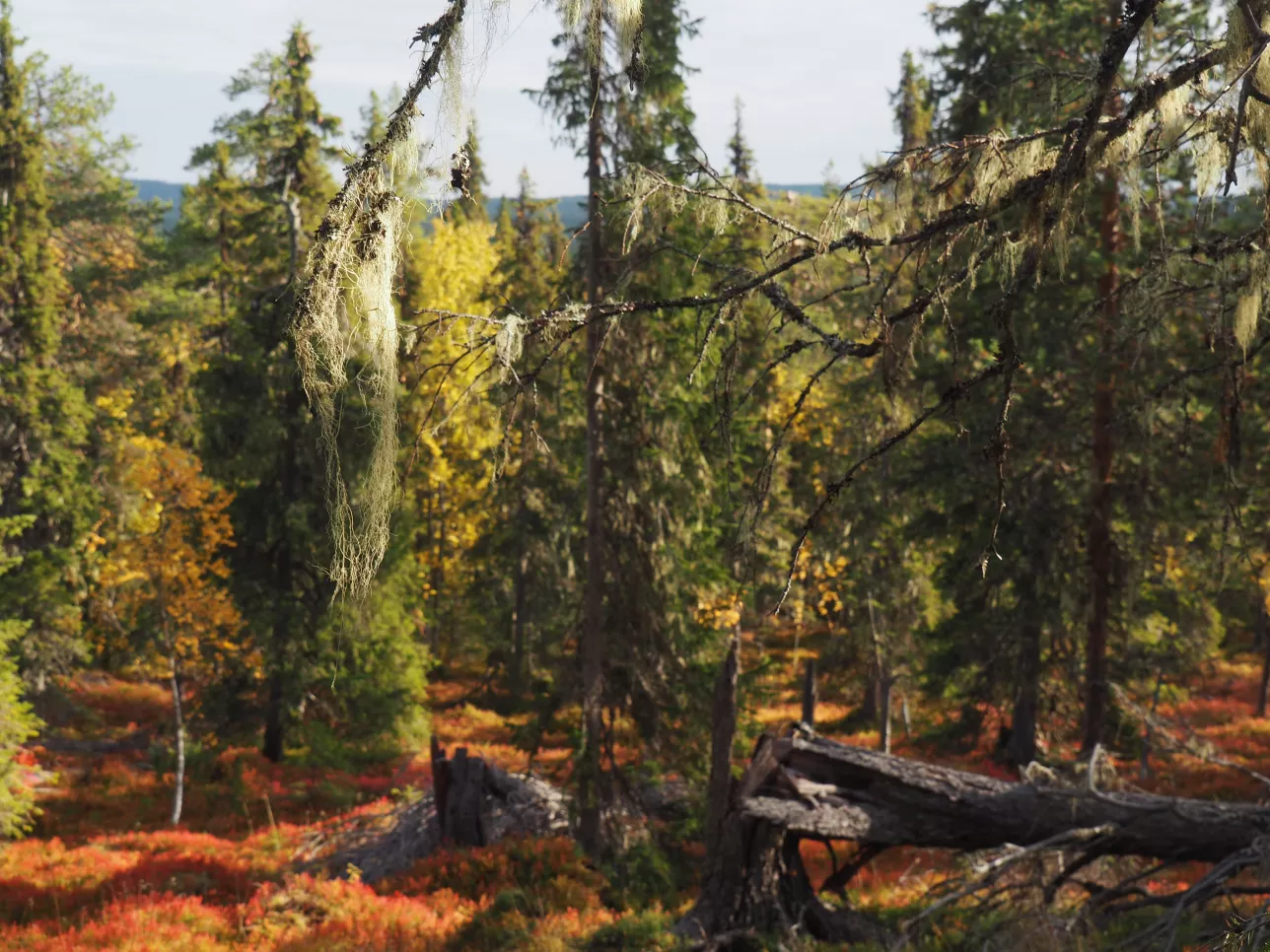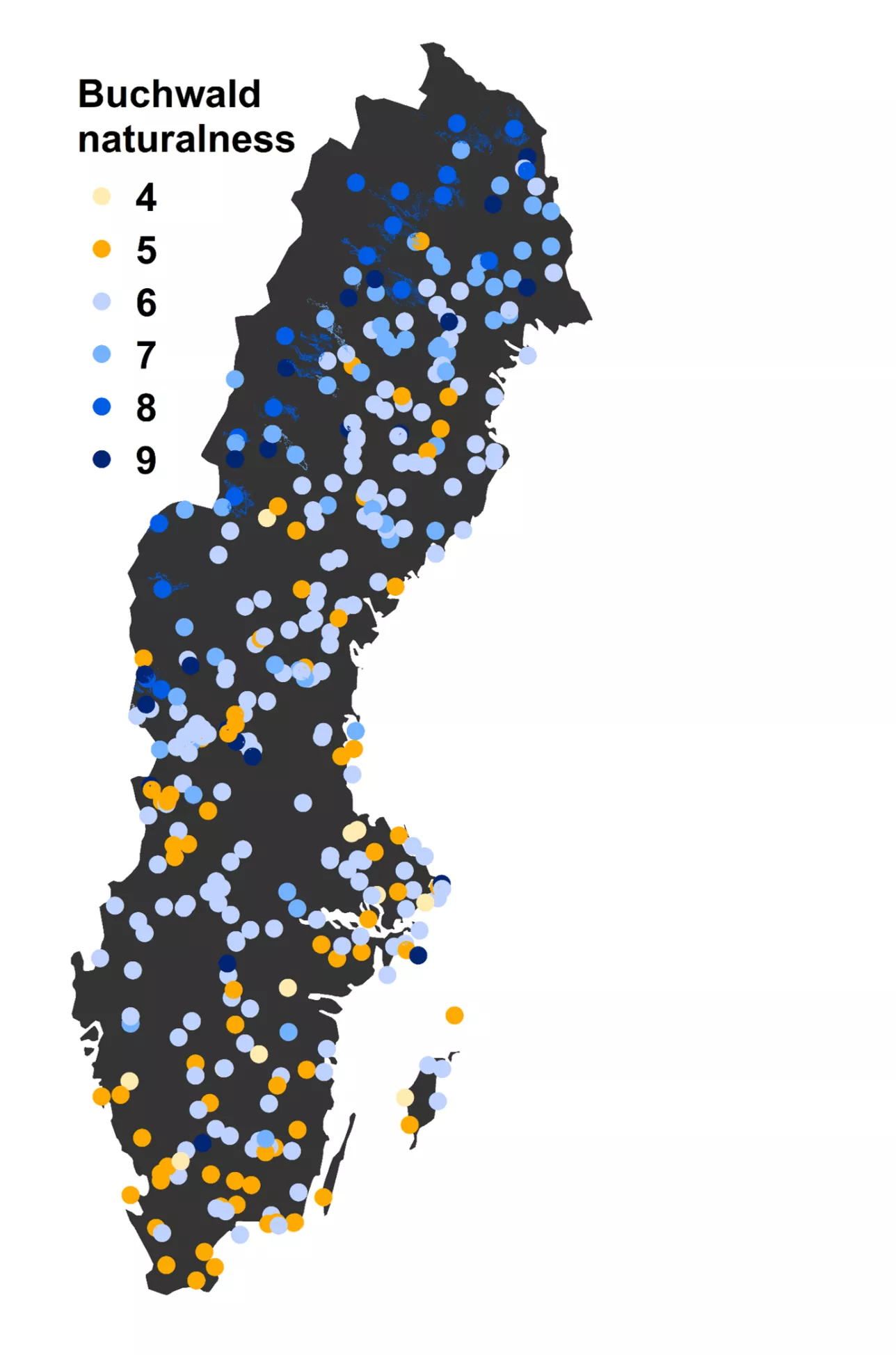Primary forest project
A project on the states and changes in Swedish primary forests
Primary forests are forests with minimal direct human impact. Nowadays these forests are rare relics in the landscape that tell a valuable tale of how our ecosystems would have looked in the absence of land use.
This page describes our work on primary forests over time, activities and publications.

Mapping primary forests in Sweden
In 2018 we started mapping primary forests in Sweden with aim to provide a basis for our network of forest plots and satellite-based analysis. To date more than 500 forests have been added to our digital map making it one of the most extensive maps in Europe.
Primary forests have many definitions and several related terms exist, such as pristine or virgin forests. They are sometimes also referred to as old-growth forests. In reality there is a continuum of naturalness defined by the amount of past human impacts. We have therefore ranked all forests by naturalness and our map includes forests ranging from old-growth that may have experienced some selective logging and forest grazing to primary forests with no signs of direct human impact.
Primary forests are rare in Sweden, the mapped forests represent only 2% of Sweden’s forest land, and only a portion of this 2% are primary forests of the highest naturalness. They are, however, highly valuable for research. They inform us on how ecosystems would have looked without direct human impact, and they can therefore be seen as a part in a long-standing experiment, where they act as a control or baseline to an experiment of land use that may have been ongoing for centuries. In this way they form an experimental setup that no researcher could create in a life-time.
Film from our field work in 2021
Forest plot network
One of the main motivations for mapping the primary forests was to be able to establish a network of forest inventory plots that target the most natural forests below the mountain foothills, that is, forests that are otherwise representative for the general landscape.
We started establishing plots in 2019 and our network now includes plots in more than 30 forests. The network includes forests across the country, from the arctic circle in the north to the southern temperate zone.
Our main research questions include carbon storage, changes in carbon storage (i.e. uptake or release of carbon), vegetation structure, vegetation composition and biodiversity. We are also increasingly using the network for understanding how climate change has impacted our natural ecosystems with several initiated and planned sub-projects.

Publications
Wolf, J., Asch, J., Tian, F., Georgiou, K., & Ahlström, A. Canopy responses of Swedish primary and secondary forests to the 2018 drought. Environmental Research Letters, 10.1088/1748-9326/acd6a8. 2023. Link to paper
Mikolāš, M., Piovesan, G., Ahlström, A., Donato, D.C., Gloor, R., Hofmeister, J., Keeton, W.S., Muys, B., Sabatini, F.M., Svoboda, M., Kuemmerle, T. Protect old-growth forests in Europe now. Science, 10.1126/science.adh2303, 2023. Link to paper
Ahlström, A., Canadell, J.G., Metcalfe, D.B. Widespread Unquantified Conversion of Old Boreal Forests to Plantations. Earth's Future, 10.1029/2022EF003221. 2022. Link to paper
Ahlström, A., de Jong, G.E., Nijland, W. & Tagesson, T. Primary productivity of managed and pristine forests in Sweden. Environmental Research Letters, 10.1088/1748-9326/ab9a6b, 2020. Link to paper
Contact and people
Anders Ahlström, Project lead
Senior Lecturer, Dept of Physical Geography and Ecosystem Science (INES), Lund University
Didac Pasqual, PostDoc, INES
Carbon storage and soil carbon analysis
Camille Volle, PhD student, INES
Changes in carbon storage over time, biodiversity, mapping
Emily Register, Research assistant, INES
Field work, mapping and lab analysis
Anders Jonshagen, consultant, INES
Soil sampling
External collaborators
Hanna Axén, PhD Student
Umeå University,
Detailed budget of carbon flows
Daniel Metcalfe, Professor
Umeå University
Sun Jia, Assistant Professor
Wuhan University
Chinese primary forests
Partners in the initiation and design of the project
Robert Jackson, Professor
Stanford University, USA
Jennifer Harden
Geological Survey, USA
Gustaf Hugelius, Professor
Stockholm University

